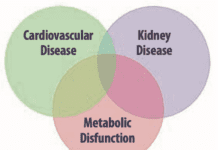If youve heard of the glycemic index (GI for short) but arent quite sure whether you need to pay attention to it-or exactly what it means-youre hardly alone. Scientists have been debating the merits of measuring the glycemic index since its introduction in 1981. The glycemic index uses a 100-point scale to measure how rapidly the carbohydrates in a food cause blood sugar to rise. Glycemic load (GL) adjusts this figure by taking into account serving sizes and the amount of carbohydrates per serving.


Foods with a high GI value cause a big rise in blood glucose; low-GI foods, only a small rise, explains Susan B. Roberts, PhD, director of Tufts HNRCA Energy Metabolism Laboratory and author of The i Diet www.myidiet.com. Low-GI foods have been shown to suppress hunger extremely well because the more stable blood glucose produced by these foods tells our food brain that all is well and we dont need to eat again yet.
Now a new statement issued by an International Scientific Consensus Summit puts the health benefits of low-glycemic eating on a firm scientific foundation. The expert panel weighed in on the validity of the GI meth-odology and of GL as the best predictor of foods blood-sugar effects. There is con-vincing evidence, the consensus statement concluded, that diets low in GI/GL:
– Improve glycemic control in type 2 diabetes.
– Reduce the risk of type 2 diabetes, by improving insulin sensitivity and the func-tion of cells in the pancreas.
– Reduce the risk of coronary heart disease, by improving cholesterol levels and markers of inflammation.
VISION AND WEIGHT: This consensus aligns with previous Tufts research, led by Nicola McKeown, PhD, linking a low-GI diet with reduced risk factors for meta-bolic syndrome-a cluster of symptoms tied to both dia-betes and heart disease. Tufts scientists led by Allen Taylor, PhD, have also published a series of studies associating carbohydrate quality and low glycemic index with lesser risk of advanced macular degeneration (AMD), the leading cause of blindness among older Americans.
Protecting against diabetes and heart disease, along with guarding your vision, are compelling reasons to consider glycemic index/load when planning your meals. But low-GI diets have been most widely touted for weight loss-a claim the new consensus state-ment rated as supported by probable (rather than convincing) evidence.
Roberts and fellow Tufts researchers ini-tially cast doubt on the effectiveness of low-GI diets for weight loss. Subsequent stud-ies by Roberts at Tufts and another group at Harvard, however, found that watching your glycemic index does promote weight loss for about half the population. Being self-aware about hunger is one clue to whether a low-GI diet might work for you: If you get hungry more quickly after eating a high-GI breakfast than a low-GI one, for example, its more likely that watching GI will help you lose weight.
Its really worthwhile to include some low-GI foods among the options in your menu plan, says Roberts, not only for their benefit in reducing hunger but also because they provide the carbohydrates your body needs. We do seem to instinc-tively crave carbo-hydrates, and any plan that doesnt have a way to give you some carbs in a healthy way will be fundamentally unsatisfying after awhile.
But you dont need to keep a lot of numbers in your head, she adds. Just remem-ber that refined and finely ground cereals and starches, which are digested relatively quickly, usually have a substantially higher GI value than coarsely milled and whole cereal grains, nuts, fruits, legumes and non-starchy vegetables.
























